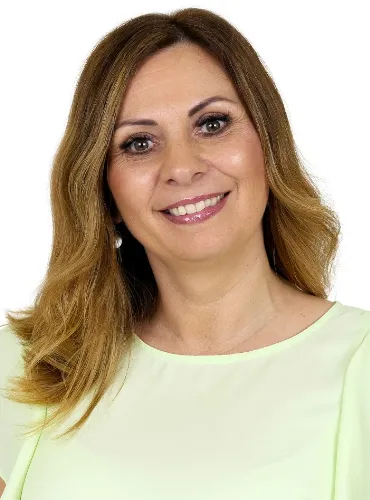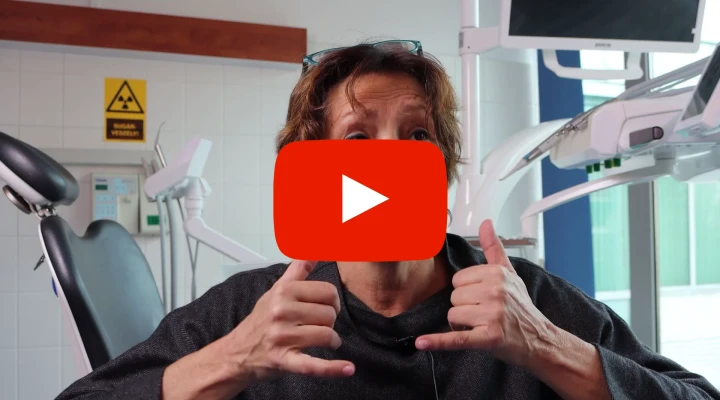Our speech and language therapists can help with these swallowing problems and speech impairments, not just for children. For adults, it may be necessary if the problem was not addressed in childhood, or it can develop at any time if there is a change in the dental arch, jaw joint or chewing muscles.
Who is a speech therapist and what do they do?
A speech and language therapist is a pedagogically based therapeutic and educational specialist for children and adults with disorders, defects and impairments of voice, speech and language. In the course of his or her work, he or she often works in collaboration with doctors, psychologists, teachers, physiotherapists, physiotherapists, nurses and other professionals with specialised training in other fields.
How is speech therapy related to dentistry?
Creating a beautiful and well-functioning set of teeth is only partly a weight management task. Often, abnormalities of the dentition and occlusion, which are visible to the naked eye, are caused by abnormal swallowing function. Correction of incorrect swallowing is a task that falls within the competence of the speech therapist, but it is also worth looking at the connection the other way round; to correct mispronounced, distorted speech sounds, orthodontic treatment may be necessary to mechanically manipulate the teeth and tongue. Irregular swallowing function - myofunctional dysphagia results in changes to the dentition that require orthodontic treatment in the majority of cases. Speech and language therapy in parallel with orthodontic treatment makes it possible, in addition to changing the position of the teeth, to eliminate or modify the forces exerted by the tongue on the dentition inside the mouth and to strengthen the muscles around the lips and mouth. If the speech therapy is not carried out during the treatment, the teeth may move or return to their previous position after the removal of the fixed appliances. In the case of myofunctional dysfunction, failure to correct atypical swallowing may result in incomplete orthodontic treatment and or the result at the end of the process may not be permanent, so that all or a significant part of the intervention may have to be repeated and corrective treatment may be required in the future.
In which cases do you need a speech and language therapist?
- If the child was born with cleft lip and/or cleft palate or other developmental abnormalities
- If speech does not start on time (delayed speech development)
- If language development does not follow the typical path but deviates from it (language disorder)
- If the child's speech is still difficult to understand at the age of 5-6 years (articulation disorder)
- If the child has speech reading and comprehension problems
- If the child has partial ability problems at preschool or school age
- Swallowing with tongue thrust, often detected by a dentist or orthodontist
- Dysphonia (hoarse, slurred voice, vocal cord nodules, polyp)
- If the patient stutters or has a stammer
- If the patient suffers a total or partial loss of speech or speech understanding (aphasia, dysautonomia) due to a traumatic brain injury
What will happen at the speech therapist's first appointment?
At the first consultation, a feedback and treatment plan will be set up. During the examination, we will look at the static state of the speech organs and the functioning of the mouth-related functions and any problems. The patient will provide anamnestic information, speech (and movement) development, oral habits, previous dental and orthodontic treatment, possible complaints related to the inner oral cavity and the external speech organs . In cooperation with the patient, the condition and structure of the muscles associated with the face and swallowing, occlusion, growth rates of the facial cranium, tongue brake length, tongue movements and voice production are also examined. The first session lasts approximately 60 minutes.
What will be the next steps?
The speech and language assessment is followed by regular speech and language therapy (myofunctional therapy). This is a muscle therapy that accompanies orthodontic treatment to force-balance movements in order to optimise muscle states, movements and forces at rest and during activity, and to eliminate possible over- and under-activities of the muscles. Where necessary, the complexity of effective treatment is ensured by orthopaedic and/or movement therapies to support whole-body symmetry and harmony.
How does a myofunctional trainer help?
The most common problems that can be helped by a trainer:
- overcoming "over time" (over 2 years of age) finger sucking or pacifier sucking
- mouth breathing
- correcting the positioning of growing teeth
- preparing and shortening the orthodontic process
- proper development of the jaw bones
- complex treatment of speech therapy associated with tongue thrust or lip-smacking swallowing
- correcting dysfunction of the jaw and muscle dysfunction
In these cases, the harmony of the muscle forces is disturbed and one of their functions becomes predominant to the detriment of other muscle functions. Their use can reduce, and in some cases eliminate, the need for subsequent fixed orthodontic treatment, reduce the number of cases requiring tooth extraction and reduce recurrence following fixed treatment by harmonising the muscle forces.
GMP speech reading and comprehension test for children aged 4-13 years.
What areas are we looking at?
- speech understanding
- word activation
- transformational perception
- auditory perception
- auditory attention
- verbal and visual memory
- seriality (sequentiality)
- speech sound differentiation ability
These are all areas that require an adequate level of development to learn to read, write and count fluently.
Where necessary, the development of these areas is individualised based on the results of the tests.
It is recommended that two tests are carried out before the GMP test:
an ear, nose and throat examination and an audiology extended hearing test.
Symptoms/signs that may indicate the need for an investigation:
- prolonged speech therapy problem (stubborn, difficult or slow to correct voice problems)
- child has difficulty in learning a new word/song/poem
- cannot/has difficulty remembering the content of a story
- often asks back
- frequent upper respiratory tract infections
- frequent middle ear infections
- delayed speech development
- vocabulary poor, slow to develop
- difficulty understanding and following verbal instructions
- easily distracted
- reading and spelling difficulties at school
Frequently asked questions:
Myofunctional trainer for abandoning finger sucking in childhood, correct chewing, mouth and tongue movements
For young children we use a very modern and innovative tool called the myofunctional trainer. The correct, regular and harmonious development of our face and teeth can be negatively affected by incorrect feeding habits, inappropriate chewing, incorrect mouth and tongue movements and various bad habits. One of the most harmful habits is "over-time" finger sucking and pacifying in children: it can lead to open biting, improper breathing and tongue thrust swallowing, which can later become a source of many serious problems and needs to be treated.
Why is it important to address poor joint and muscle function and "bad habits"?
- tongue thrust swallowing can lead to bite disorders, problems with tooth growth and speech defects (e.g. crossbite, outward or inward bite, potty mouth, etc.)
- dysfunctions of the jaw joint can also lead to lesions in the spine-neck-head region
- this may include tooth decay, gingivitis, loosening of teeth or loss of teeth
How can a myofunctional trainer help?
- overcoming "over time" finger sucking or pacifier sucking
- correct the positioning of growing teeth
- prepare and shorten the orthodontic process
- proper development of the jawbones
- elimination of tongue thrust swallowing
- correcting dysfunctions of the jaw joint and muscle dysfunction.
Our related doctors
Any questions before booking an appointment?
If you are unsure which doctor to see or what examination you require, we are here to help!
Simply request a free callback from one of our colleagues, who will help you find the right specialist based on your specific issue.






Reviews